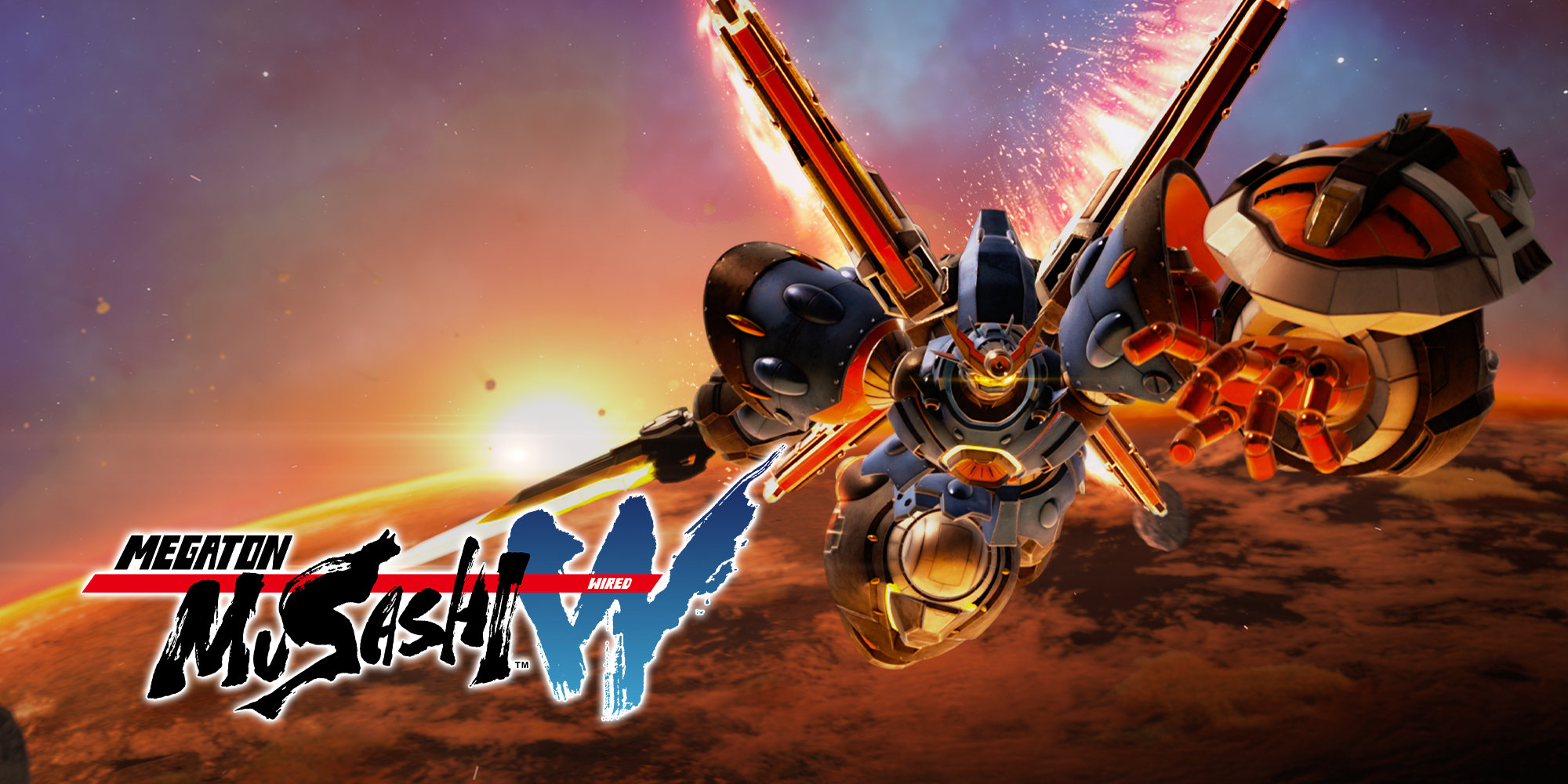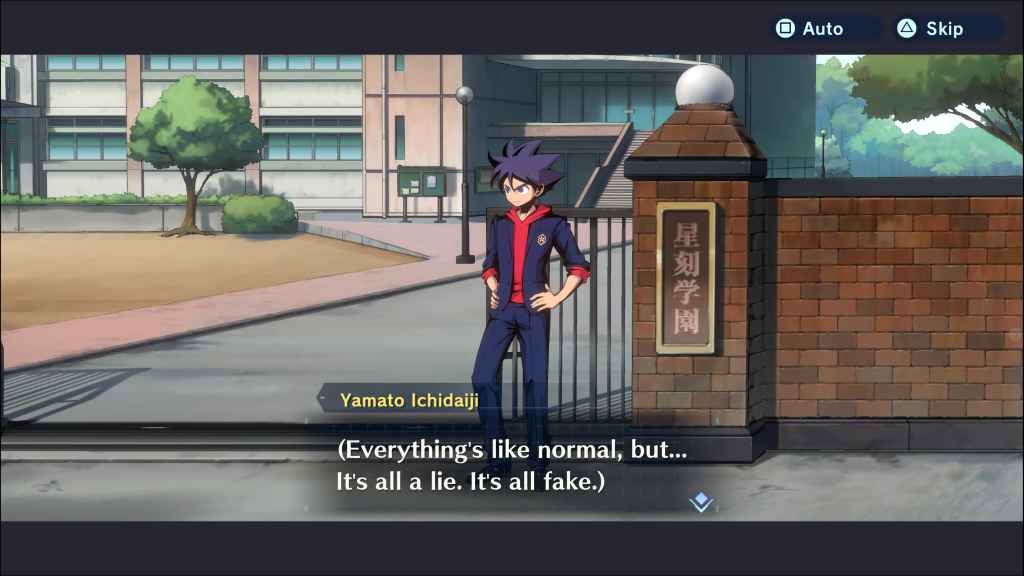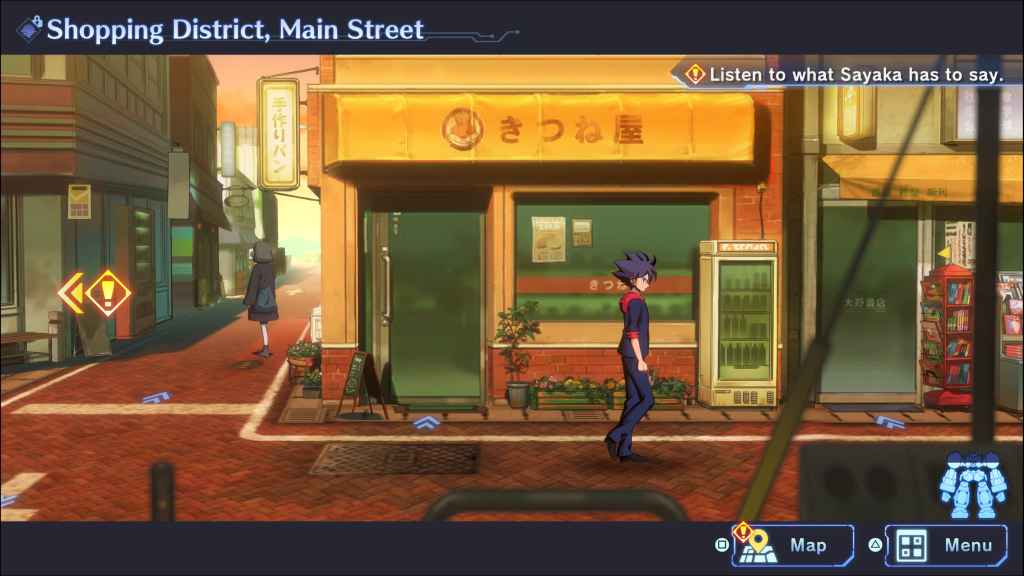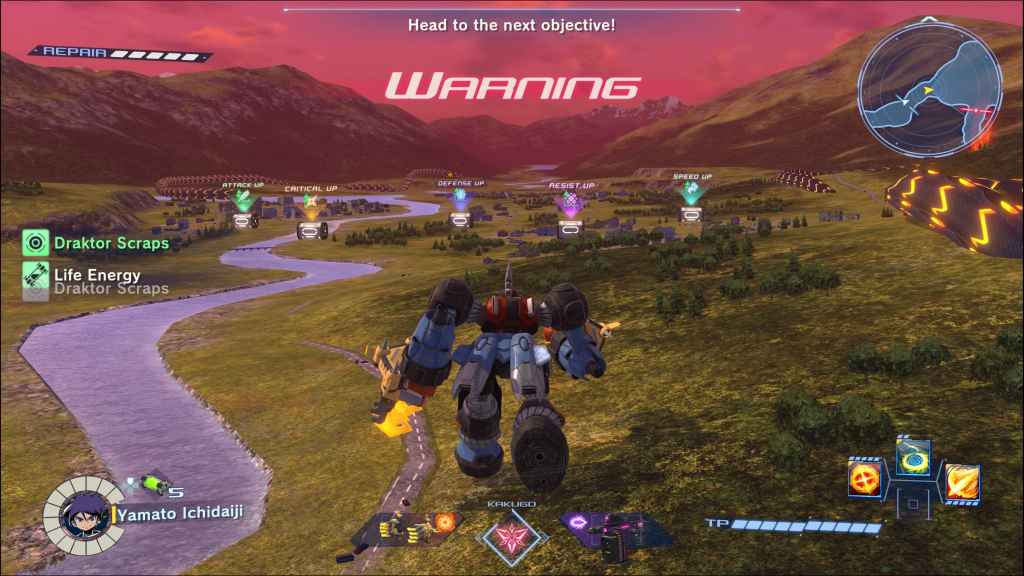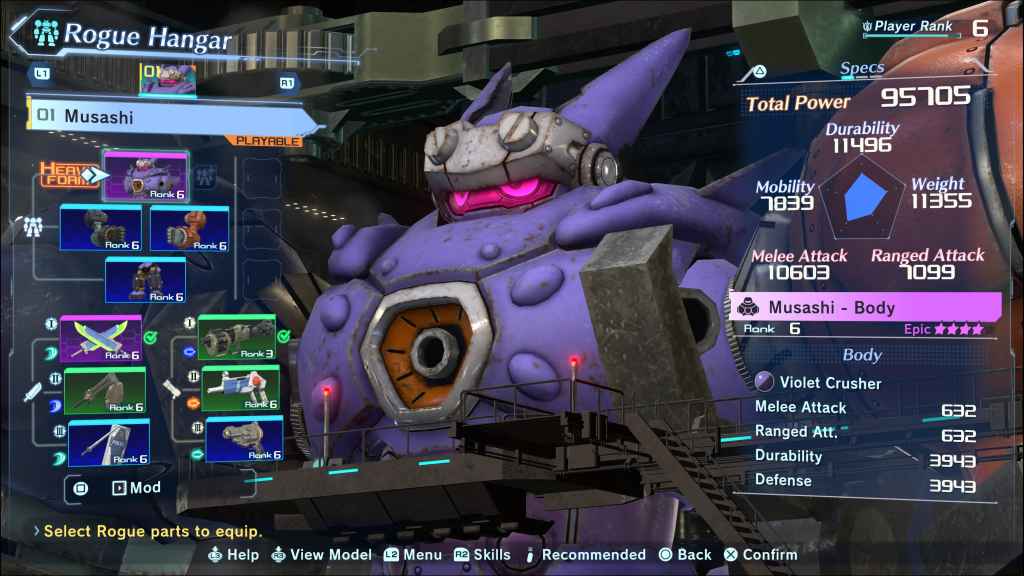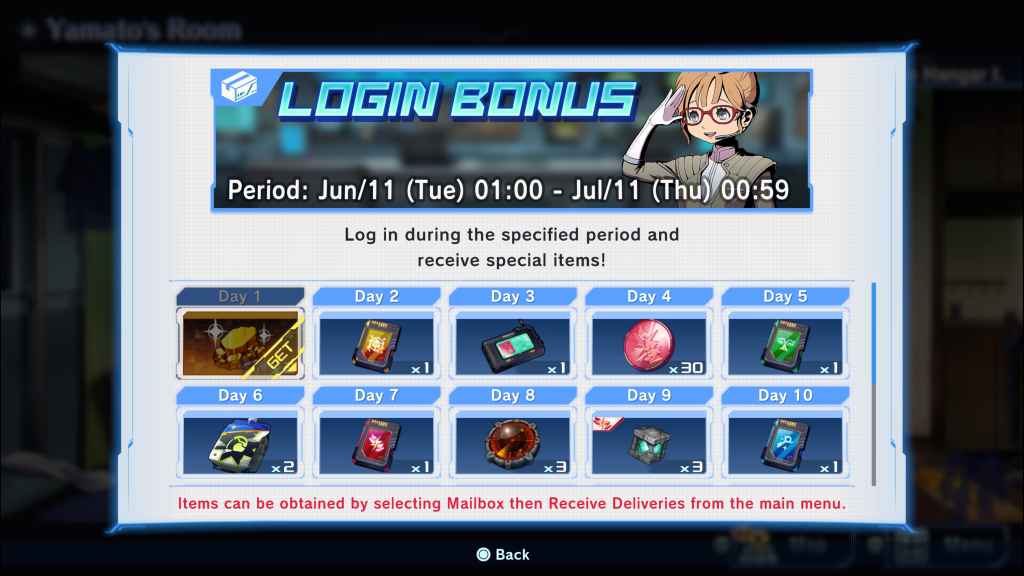Megaton Musashi W: Wired Review (PS5) – Despite relying heavily on its inspirations and arguably well-used anime tropes, Megation Musashi W: Wired stands as an impressive foray into the mech-combat genre and a return to form for Level-5, with tactile mech combat being balanced well with a genuinely intriguing story that had me engaged from beginning to end.
Make no mistake, Megaton Musashi W: Wired might look like its treading familiar territory, but it does so with a clear ambition and succeeds in delivering a blood-pumping experience with an astonishing amount of depth to be uncovered for those willing to look.
Megaton Musashi W: Wired Review (PS5) – Robot Action with a Heart of Gold
More Than Meets The Eye
Where the plot of Megaton Musashi W takes a decent amount of time to get properly rolling is a significant amount of time is spent establishing the world of the game, and making sure to tell players that there is absolutely more to this game than the mech combat.
Players enter the shoes of the hotheaded high schooler Yamato Ichidaiji, a young man with a strong rebellious streak and a penchant for being a general delinquent.
This tried and true foundation for a protagonist is situated against a fairly recognisable background for those well-versed in anime-adjacent titles, as the high school setting invites an ensemble cast with a variety of personalities into the fold.
Each character generally represents a trope but manages to be an enjoyable presence in the story still overall.
Throughout the lengthy prologue of the overall story, it is made clear that there’s more to the world than simple high schoolers going about their lives, as Yamato is shown to have flashbacks to family and friends dying in a tragic accident.
Before long, the plot evolves into Yamato and friends being recruited into the Oblivion Bay programme and being put on the front line to defend Earth from the Draktor threat.
This is by no means the first time this type of story has been told and will absolutely not be the last, so those looking to have their minds blown with an introspective story aligning with Neon Genesis: Evangelion may find themselves wanting slightly more from this premise.
But in spite of this, I found the balance between the world-ending threat and the rich internal life of those living in to the post-apocalyptic shelter to be engrossing and well-executed, allowing characters to develop into their own, even if I did find myself questioning if the game needed to take so long to start.
Layers Upon Layers
Characters are given ample time to breathe in the extended narrative moments that tie the main battles of the game together. These narrative moments take the form of a visual novel form and feature gorgeous character artwork that evokes the classic Level-5 style, with similarities to their Yo-Kai Watch series of games.
This style allows for expressive animation and some really detailed backgrounds that helped me to engross myself in the plot.
While players simply wanting a mech battle game may be slightly put off by the extensive narrative, I found myself quickly accepting the game for what it was as I could see similarities between this and games like Vanillaware’s 13 Sentinels: Aegis Rim.
Despite the world-ending threat being just on the horizon, the domestic drama of high school is a refreshing change of pace that helps to cut up the melodrama.
Where Yamato begins the story as an almost unlikable character, I found myself growing to like him over time as more of his story and motivations begin to emerge and the same can be said about the remainder of the cast you come across.
There are some incredibly interesting moments that go above and beyond to humanise the alien threat of the Draktor and the struggle to reach a peaceful conclusion.
The moral grayness of this conflict doesn’t quite reach the peaks of its contemporaries but the attempt is worthy and appreciated in lieu of a bog standard approach to the genre.
Particular key moments are portrayed through anime sequences that succeed in showing exhilarating moments in bombastic detail, really punctuating climactic moments throughout the story. These are used sparingly enough to feel significant while not feeling like an afterthought.
With such a focus on narrative and a myriad of perspectives, I did find myself thrown off by an inconsistent pacing that was going at full speed or slowing down to be totally glacial. With how this game manages to meld the extended story line of several releases into a single entry, these pacing issues may be somewhat expected, yet I did find myself noticing some hiccups.
The twists and turns of the narrative were nonetheless entertaining and have me excited to explore more of the world, which can only be a good thing in the grand scheme of things.
Suiting Up
The other half of the coin here is the intense mech battles that take place against the Draktor threat. Very luckily, the combat on offer here is tactile, fun and full of customisation for players to get involved with in order to create their ideal builds and determine their approach to battle.
The third-person action combat has a blistering pace and generally involves moving from battle area to battle area and defeating waves of various enemies.
Combat is relatively simple, with a single button for melee combat and the triggers being reserved for ranged options, but this never feels like a bottleneck in how much fun the game can be. Megaton Musashi W embraces this simplicity and runs with it.
Combat manages to feel fluid and fun to play without feeling to weighty or clunky and does a great job in emulating the feeling of classic mech anime shows that the audience of this game will no doubt be familiar with.
Flashy special moves and even small details like characters shouting the moves they are performing all add to the theatrics of the game and sell the idea of this being a solid adaptation of a show.
Battles tend to take place in open arenas, in the middle of wrecked human cities and ruined landscapes – the jump between the suburbia of Ixia to this is a stark one but manages to properly show the extent of the damage inflicted on the world.
Additions like customisable special moves and a strategic “Kakugo” system allow you to further change your approach to combat by placing priority on particular stats.
Making yourself into a glass cannon with “Sacrifice Kakugo” leads to some high damage numbers, but raises the risk for your own mech. With the relatively mild difficulty of the game – even on the dedicated “hard” setting – I didn’t really find myself having to weigh up the risks of these moves and was able to succeed without much resistance – which was a slight shame.
You can create up to 3 custom load-outs to swap between on the fly in battle depending on your preferences – I always tended to stick to the double blades – with great fluidity and flexibility.
The game never punishes you for picking your favourites and sticking to them, so players are free to experiment to try and find new additions to their arsenal.
Between the main campaign, side quests and extra missions, there are a lot of opportunities to mess around with new builds and see what works best, with plenty of rewards to be earned for that experimentation.
Tinker Time
Customisation is a major focus of Megaton Musashi W: Wired and no expense is spared in making sure that are a bevvy of options to explore on both mechanic and cosmetic levels. Each completed mission rewards you with a frankly absurd amount of new items to equip to your mech and these take the form of new weapons and new body parts.
Between each mission, these body parts and weapons can be equipped in order to improve your stats and offensive potential against higher level enemies.
While customisation may appear overwhelming at a glance, with a myriad of stats to consider, these menus include a helpful auto-builder that can prioritise different things.For players unfamiliar with this type of customisation, this is a helpful option to ensure that you can get back to the combat without being muddled.
This customisation extends even further to the “Motherboard” system, allowing for even further player expression and experimentation between battles. This iteration of the classic skill tree system splits off into 4 key branches that are each extensive and prioritise particular things.
Completely filling out this skill tree is a monumental time investment so I found myself sticking to my favourites where I could.
This skill tree is where various special moves can be unlocked to equip to your Rogue for use in combat, so it’s well worth exploring and spending materials to develop it when you can between missions.
I appreciate the ability to automate a great deal of the customisation and development of this game as it can be a slight bit overwhelming for those who aren’t prepared for the granular detail that is required in order to get the most out of it.
Where I found myself getting lost in the layers of menus, some others will absolutely love what’s on offer here and I can respect it – I’ll stand in awe of their dedication to building the best hulking mech possible.
The one downside to the minutia of customisation is that I never found the gameplay challenging enough to warrant moving away from my most powerful builds. With how much equipment you get from naturally completing missions, I just found myself prioritising making my overall power number go up, and I managed to mow down enemy after enemy without really having to think about it.
While I appreciate the dedication to simplicity, I wish there was a reason for me to consider other strategies.
Spare Parts
Where the core of Megaton Musashi W: Wired is an exceptionally solid – if safe – time, there are some unfortunate setbacks that do manage to rear their head throughout the experience that had me confused as I played.
Least of all being the presence of live-service elements in a primarily single-player game, with a staggering amount of microtransactions open to players to indulge in.
While none of these microtransactions are integral to the experience as a whole, I did find myself slightly bemused that there were so many on offer, especially as this game effectively functions as a compilation of all of the Megaton Musashi titles so far.
Doubly so that this is a game that encourages customisation and experimentation, so some of the cooler designs being locked behind a small fee on-top of the original cost is a bit cheeky.
Similarly, I found myself disappointed with the various multiplayer offerings on show here. Throughout this review period, I found absolutely nobody to match up with in over 30 minutes of matchmaking.
While the multiplayer is absolutely not a focus here, I was disappointed to not give it a whirl or be able to give my thoughts on it. To that end, I wonder if the multiplayer was worth implementing at all?
Customisation in multiplayer is totally separate from single-player progression and this is probably for the best, with players able to engage in PvP colloseum matches or join other players in PvE missions.
While both of these sound fun, I was disappointed that I was unable to actually engage with them, even without bots filling the empty spaces.
Ultimately this does very little to damage my enjoyment of the game, as the story and single-player content is clearly the focus here for the team but I can’t help but be slightly confused at this muddled identity when it comes to extra content.
Including a daily login bonus and a premium battle-pass feels at odds with Megaton Musashi W: Wired’s inherent design as a narrative adventure game. Perhaps a weird remnant of a previous version? I could ignore it either way.
Megaton Musashi W: Wired is now available on PS5 and PS4.
Review code generously provided by publisher.
